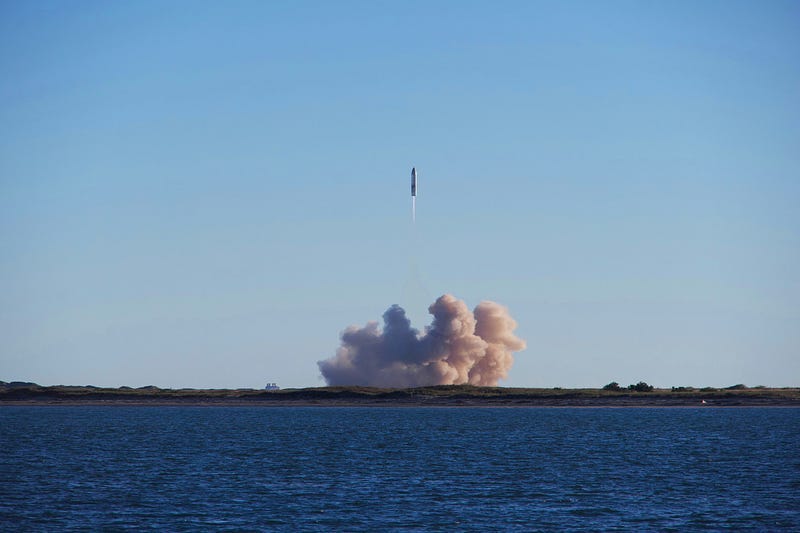SpaceX Has Finally Figured Out Why Starship Exploded, And The Reason Is Utterly Embarrassing
This should never have happened.

On the evening of January 16th, residents of Turks and Caicos must have thought the world was ending as burning red debris filled the sky. This was SpaceX’s 7th failed attempt to get their now-infamous Starship to work. They lost control of the upper stage, causing it to catastrophically explode over these pristine islands, littering them with debris. Needless to say, this was a serious step backwards for SpaceX, as this rocket was meant to already be fully functional and ready for service. But, over a month on, we have finally found out what caused this “mishap,” and it’s face-slappingly damning!
As reported by The Verge, SpaceX believes that vibrations caused a failure of a fuel line in the aft section of the upper stage (i.e., Starship, not its Super Heavy booster), leading to a fuel leak. Two minutes after separation and ignition of the upper stage engines, this leak also ignited. The leak and consequent fire were so significant that they exceeded Starship’s venting capacity, which is used to extinguish such fires. This raging fire dramatically increased the pressure in the aft section and began to compromise the rocket engines. After two minutes of this, these engines started to shut down automatically, which somehow led to communications loss to ground control (which really shouldn’t be the case). Three minutes after this loss of communication, Starship entered into a self-destruction sequence and rained down in fragments over Turks and Caicos.
If you think this sounds like something that shouldn’t happen, you’d be right.
Firstly, engine shutdowns or fires shouldn’t cause a loss of communication. That is basic operational redundancy.
But also, fuel leaks are really common with rockets, and we know how to prevent them from happening. The fuels rockets use can escape through the tiniest of faults, and the complex fuel systems they use have numerous potential points of failure. As such, it is standard practice to find these potential leaks with intensive pre-flight checks to identify and solve these issues before they escalate into a catastrophe.
For example, Artemis 1’s launch was deferred several times due to fuel leaks. These leaks, while small, could have quickly escalated to spectacular mission failure. Instead, NASA didn’t launch, fixed them, and tried again. As a result, even though Artemis 1 was the first-ever launch of their SLS rocket, it completed its mission to orbit the Moon and return to Earth. By comparison, after seven failed launch attempts, Starship has yet to achieve a complete orbit of Earth at the lowest possible altitude.
But SpaceX did say that vibrations caused this leak in-flight, so pre-flight checks couldn’t solve this, right?
Well, no. Fuel system overpressurisation, X-ray analysis, and other checks are meant to be used to identify even the slightest faults in these systems, catching them before they develop into a mission-ending leak. The size of the fuel leak on Starship heavily implies that these checks either didn’t happen or weren’t done properly. Alternatively, if they were done properly, it shows that SpaceX is cheaping out and isn’t designing their components with a high enough safety factor. Safety factors are when engineers design components to withstand forces and loads a certain number of multiples (or factors) over their expected use case. Too low of a safety factor, and even something as simple as slightly more vibration than expected, can cause a catastrophic failure, as we saw with Starship.
I want to give you context as to how embarrassing this is for SpaceX.
Over 50 years ago, NASA was able to get its Saturn V, a rocket nearly as large as Starship, to fly without ever having a failed launch over its 13-launch, six-year operational lifespan. This was a rocket designed with computers less powerful than a Casio watch, built with far less accurate techniques and materials, with check systems and procedures infinitely less sophisticated than anything today. Yet, engineers were able to ensure it never had a launch failure, even during testing.
Technologically speaking, the Saturn V was a caveman rocket, yet it was infinitely more useful and reliable than the high-tech Starship.
But somehow, Musk found a way to make this all so much worse.
Starship was meant to be able to take 100 tonnes to Low Earth Orbit (LEO) and be fully reusable afterwards. That is 41.5 tonnes less than Saturn V, but the reusability should have made it significantly cheaper. Unfortunately, it seems Musk overestimated how much thrust their engines can produce, and as such, he has had to admit that the current design can only take “40–50 tons to orbit,” with no obvious way to correct this.
This means that, even if SpaceX can get their Starship to work, their Falcon Heavy rocket will actually be cheaper per kilogram to orbit!
What’s more, if you actually look at how expensive Starship launches actually are, its kilogram-to-orbit cost is the same as Saturn V! (read more here).
So, basically, the NASA of over 50 years ago is beating SpaceX at their own game.
Starship is an embarrassment, not just for SpaceX, but for the US. It’s not a revolution; it is a nightmare of twisted monopolistic privatisation and the idiotic inefficiency that comes alongside that. It’s pathetic and dangerous, and we can do so much better.
Thanks for reading! Content like this doesn’t happen without your support. So, if you want to see more like this, don’t forget to Subscribe and help get the word out by hitting the share button below.
Sources: The Verge, The Guardian, Euronews, Americaspace, NASA, Will Lockett

